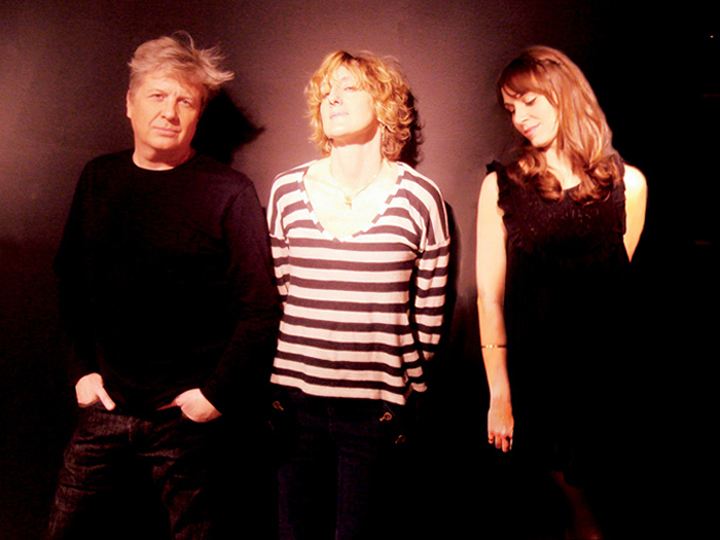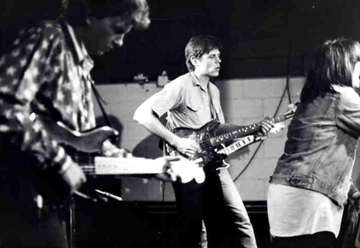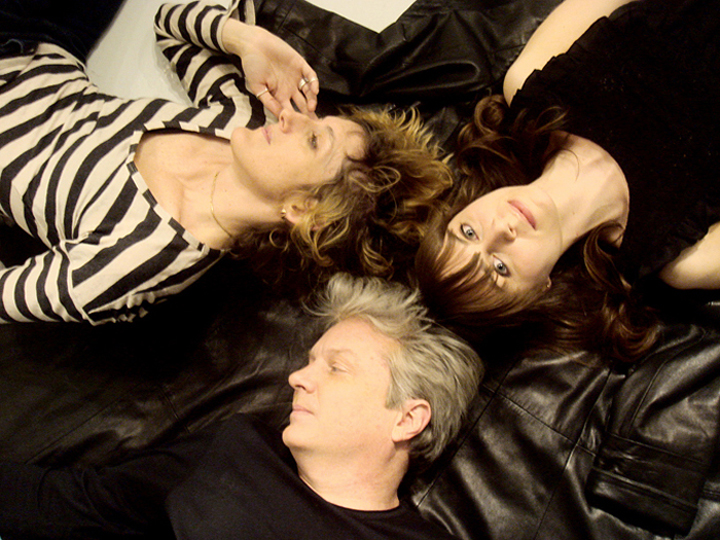
COMMAND V |
 |
Command V is a new trio with a long history. Though Cynthia Sley and Pat Irwin only recently began collaborating musically, they’ve been rubbing elbows as figures in New York’s vibrant Lower East Side since the late Seventies and early Eighties. Together with filmmaker and keyboardist Rachel Dengiz, they’ve created an aesthetic that charts the changes of the past thirty years -- in themselves, with technology, and in New York itself. |
|
Cynthia Sley wasn’t a peripheral No Waver -- her band, the Bush Tetras, was at the movement’s epicenter. The group was profiled in a 2007 American Music article: |
|
|
According to Thurston Moore, the Bush Tetras "immediately became a sensation" when the group emerged in 1980. "That first summer when Bush Tetras became the most popular band in NYC," Moore writes in No Wave: Post-Punk. Underground. New York. 1976-1980, "they were, to me, the greatest band in the world." Cynthia Sley was the band’s hypnotic singer, and held court in front of a percussive, funky rhythm section that featured thin, jagged melodies from original Contortions guitarist Pat Place. The Bush Tetras were one of the most experimental New York bands, adding African polyrhythms and UK dance influences to the disaffected rock n’ roll of their peers. They didn’t record many songs, but they piqued the interest of everyone who came in contact with the scene. |
As a member of multiple groups at No Wave’s forefront, Pat Irwin was also a crucial party of the movement. Robert Palmer, the revered New York Times and Rolling Stone columnist, described him as a "mercurial presence on the New York rock scene of the early 80's... [Pat’s bands] the Raybeats and Eight-Eyed Spy resembled each other only in that they had an aversion to the predictable and the ordinary." Purportedly a "neo surf" band, the Raybeats was more diverse and arrangmentally adroit than that title might suggest. Eight-Eyed Spy, fronted by Lydia Lunch and known for its flippant "swamp rock" covers of standards like "Diddy Wah Diddy," was as fierce and dark as the Raybeats was light and quirky. In both groups, Irwin played guitar as well as a gnarly jazz saxophone. |
New York has changed tremendously since 1980. The Lower East Side is practically unrecognizable, having long ago become a symbol of relentless gentrification that has been targeted by the National Trust for Historic Preservation as one of "America’s Most Endangered Places."(2) Music-making, too, has changed. The DIY philosophy and improvisational nature of No Wave meant that much of it went un-captured. Eight-Eyed Spy only made a handful of official recordings, and the memory of them is mostly preserved through concert bootlegs. The shift from live to computer-aided recording processes has inverted this dynamic, and many musicians now slave over recordings before they even consider live performance. |
 EIGHT-EYED SPY EIGHT-EYED SPY(L-R: PAT IRWIN, GEORGE SCOTT, LYDIA LUNCH) |
With Rachel’s help, Cynthia learned to use her computer to compose music in a new way. The two women had similar sensibilities and found synergy through which Rachel was able to help Cynthia clarify her ideas while keeping their rawness and personal emotion. Rachel also introduced Cynthia to the techniques of arranging music on a computer, which is altogether different than doing it live. "My entire concept of songwriting has changed," she explains, "I always wrote during jams with the Bush Tetras in a rehearsal space or with Pat Place and her guitar. But I had waited years for us to write again. [Making these songs] was both freeing and enlightening. I realized I could start a song on my own." |
 |
Since recording the album, Pat has moved his studio to Long Island City. In the meantime, the meat-packing district has become trendy and more expensive -- just as the Lower East Side did after its artistic heyday in the Seventies. But Pat doesn’t necessarily view these changes as negative: |
(1) O’Meara, Caroline Polk. “The Bush Tetras, ‘Too Many Creeps,’ and New York City.” |